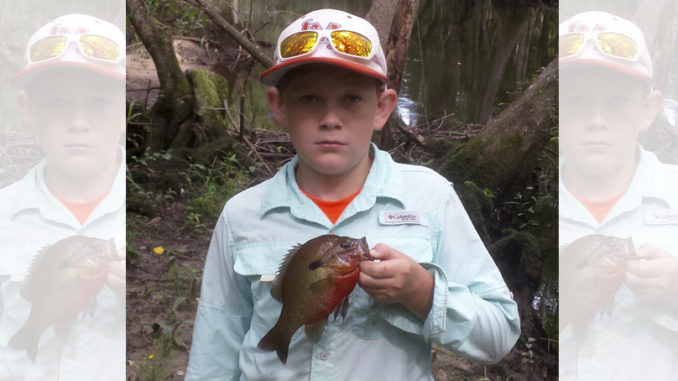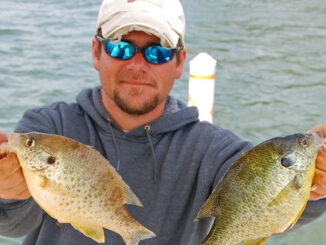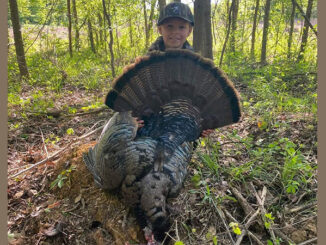
These colorful sunfish will bite a variety of lures, bait
Many fish species can get sluggish this time of year. But one that bites just as aggressively as ever is the redbreast sunfish. And South Carolina’s Lynches River is one of the top spots to find these colorful panfish. The river’s small feeder creeks, abundance of downed timber and plentiful food make it a great place to spend a summer day.
You can’t go wrong fishing live crickets under a slip cork. Redbreasts will make that cork disappear quickly. Pay especially close attention when you drift one across the mouth of a feeder creek, past a stump or downed tree, or tight to the bank in deeper water. They also like to gather under low, overhanging limbs. And dropping the cricket upstream of the limbs and allowing it to float under them will often result in a hard strike.
Artificial lures are also good options
Small spinning lures like the Mepps Aglia are also deadly. And while the narrow river’s overhanging limbs can hinder long casts, short ultralight rods and sidearm casts make it possible to land your lure in some tight spots. Casting upriver, then retrieving with the current is a good bet. Anglers should never pass on the opportunity to cast as deep into a feeder creek as possible, then retrieve the lure slowly while working it into the main river.
Small crankbaits like Rebel’s Teeny Wee Craw are also good choices, especially since the river is so full of crawdads. Darker lures seem to work best, but these fish won’t turn down a chartreuse hue.
Ron Tedder of Olanta, S.C., catches plenty of redbreasts throughout the summer. He said many anglers pass up the best spots because they “look dirty.”
“You’ll see areas, especially around the sharp curves in this river, where sticks, leaves and foam all gather and build up. It will basically be a floating mass of debris in these bends. It’s not pretty, so I think a lot of people just avoid these areas. But redbreasts get under that debris in big numbers,” said Tedder, who likes to use a cricket under a cork in these situations.
Floating debris fields are redbreast magnets
“I’ll make a cast upriver from that debris, then I’ll just watch my cork until it runs into that debris. You can’t worry about getting tangled in it. Just let the cork rest up against it for a few seconds. It usually won’t, because once your cricket gets under that stuff, a fish will pull it under,” he said.
And if that doesn’t result in a bite, Tedder said anglers shouldn’t give up too quickly.
“I’ll reel in, move my cork 6 inches up so that my cricket goes deeper, and I’ll move it up or down a few more times before I leave that spot,” he said. “These redbreast bream are in those areas, and they usually will attack your cricket right away. But when they aren’t being that aggressive, sometimes you just have to adjust the depth to put it right in front of them,” he said.




